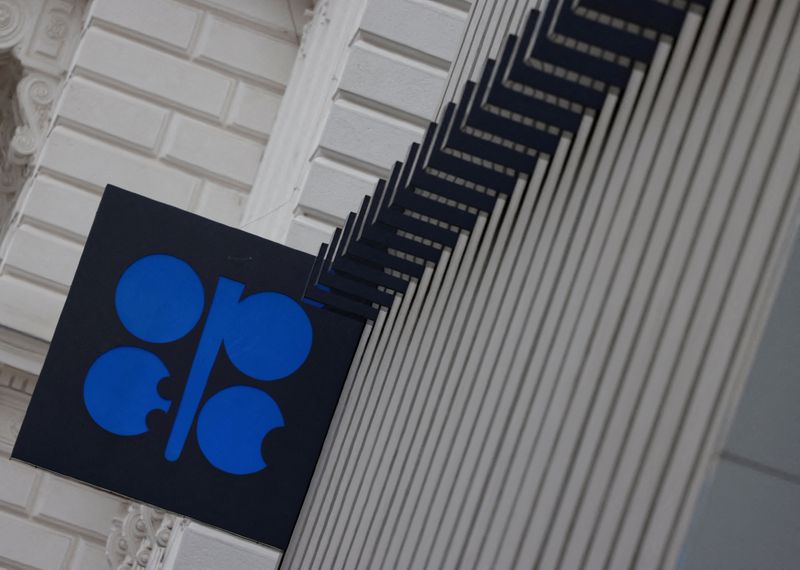By Alex Lawler
LONDON (Reuters) -OPEC raised its forecasts for world oil demand for the medium and long term in an annual outlook, citing growth led by India, Africa and the Middle East and a slower shift to electric vehicles and cleaner fuels.
The Organization of the Petroleum Exporting Countries, in its 2024 World Oil Outlook published on Tuesday, sees demand growing for a longer period than other forecasters like BP (NYSE:) and the International Energy Agency, which see oil use peaking this decade.
A longer period of rising consumption would be a boost for OPEC, whose 12 members depend on oil income. In support of its view, OPEC said it expected more push back on “ambitious” clean energy targets, and cited plans by several global carmakers to scale down electrification goals.
“There is no peak oil demand on the horizon,” OPEC Secretary General Haitham Al Ghais wrote in the foreword to the report being launched in Brazil, a non-member of OPEC with which the group is seeking to form closer ties.
“Over the past year, there has been further recognition that the world can only phase in new energy sources at scale when they are genuinely ready.”
OPEC expects world oil demand to reach 118.9 million barrels a day (bpd) by 2045, around 2.9 million bpd higher than expected in last year’s report. The report rolled out its timeline to 2050 and expects demand to hit 120.1 million bpd by then.
That’s far above other 2050 forecasts from the industry. BP projects oil use will peak in 2025 and decline to 75 million bpd in 2050. Exxon Mobil (NYSE:) expects oil demand to stay above 100 million bpd through 2050, similar to today’s level.
OPEC has been calling for more oil industry investment and said the sector needs $17.4 trillion to be spent to 2050, compared with $14 trillion needed by 2045 estimated last year.
“All policymakers and stakeholders need to work together to ensure a long-term investment-friendly climate,” Al Ghais wrote.
HIGHER 2029 FORECAST THAN IEA
OPEC also raised its medium term demand forecasts, citing a stronger economic backdrop than last year as inflation pressure wanes and central banks start to lower interest rates.
World demand in 2028 will reach 111 million bpd, OPEC said, and 112.3 million bpd in 2029. The 2028 figure is up 800,000 bpd from last year’s prediction.
OPEC’s 2029 forecast is more than 6 million bpd higher than that of the IEA, which said in June demand will plateau in 2029 at 105.6 million bpd. The gap is larger than the combined output of OPEC members Kuwait and the United Arab Emirates.
In 2020, OPEC made a shift when the pandemic hit oil demand, saying consumption would plateau in the late 2030s. It has begun raising forecasts again as oil use has recovered.
By 2050, there will be 2.9 billion vehicles on the road, up 1.2 billion from 2023, OPEC forecast. Despite electric vehicle growth, vehicles powered by a combustion engine will account for more than 70% of the global fleet in 2050, the report said.

“Electric vehicles are poised for a larger market share, but obstacles remain, such as electricity grids, battery manufacturing capacity and access to critical minerals,” it said.
OPEC and its allies, known as OPEC+, are cutting supply to support the market. The report sees OPEC+’s share of the oil market rising to 52% in 2050 from 49% in 2023 as U.S. output peaks in 2030 and non-OPEC+ output does so in the early 2030s.
